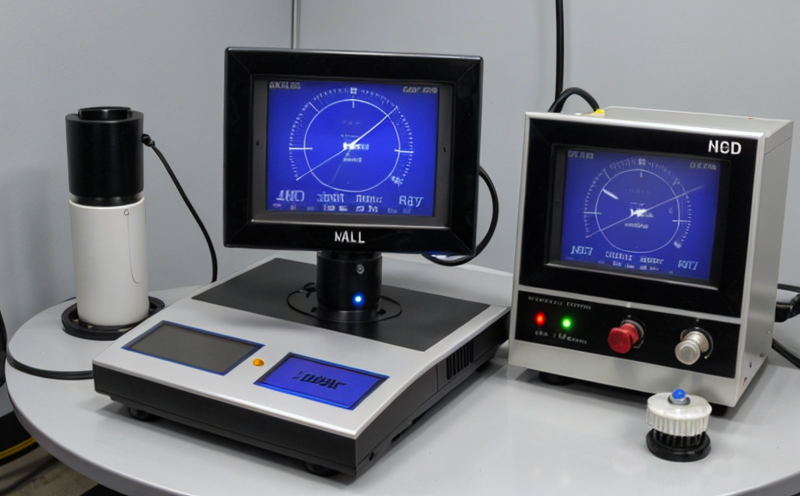Real-World Calibration Testing for Environmental Sensors
Real-World Calibration Testing for Environmental Sensors Ensuring Accuracy and Reliability in Your Business
As the world becomes increasingly dependent on data-driven decision making, environmental sensors play a vital role in monitoring and maintaining our surroundings. From air quality to water temperature, these devices provide critical insights into the health of our environment. However, without proper calibration and validation, even the most advanced sensors can produce inaccurate readings, leading to costly mistakes and compromised business operations.
This is where Real-World Calibration Testing for Environmental Sensors comes in a laboratory service provided by Eurolab that ensures your sensors are accurate, reliable, and compliant with regulatory requirements. In this article, well delve into the importance of real-world calibration testing, its benefits, and how it can elevate your business to the next level.
What is Real-World Calibration Testing for Environmental Sensors?
Real-world calibration testing involves subjecting environmental sensors to realistic conditions, simulating actual use scenarios in a laboratory setting. This process allows Eurolabs team of experts to assess the accuracy and reliability of each sensor, taking into account various factors such as temperature, humidity, air pressure, and more.
The goal is to validate that your sensors can withstand real-world conditions and provide accurate readings over time. By doing so, you can ensure that your business relies on data that is trustworthy, up-to-date, and compliant with regulatory requirements.
Benefits of Real-World Calibration Testing for Environmental Sensors
Incorporating real-world calibration testing into your quality control process offers numerous advantages, including
Improved Accuracy Real-world calibration testing ensures that your sensors are accurate and provide reliable readings, even in extreme conditions. This reduces the risk of costly mistakes and compromised business operations.
Increased Efficiency By validating sensor performance under realistic conditions, you can optimize data collection and analysis, streamlining your decision-making process.
Compliance with Regulatory Requirements Real-world calibration testing helps ensure that your sensors meet or exceed regulatory requirements, minimizing the risk of non-compliance and associated fines.
Reduced Downtime Regular real-world calibration testing enables you to identify potential issues before they become major problems, reducing downtime and maintaining business continuity.
Enhanced Credibility By working with Eurolabs accredited laboratory, you can demonstrate your commitment to quality and reliability, enhancing your reputation among customers, partners, and stakeholders.
Cost Savings Real-world calibration testing helps prevent costly mistakes and ensures that your sensors operate within their designed specifications, reducing unnecessary repairs and replacements.
Key Benefits for Various Industries
Real-world calibration testing is crucial across various industries, including
Environmental Monitoring Ensure air quality, water temperature, and other environmental parameters are accurately measured to inform decision making and regulatory compliance.
Agriculture Validate soil moisture sensors, weather stations, and other equipment to optimize crop yields and reduce waste.
Manufacturing Confirm that sensors used in production lines meet or exceed quality control standards, reducing product recalls and improving efficiency.
Research and Development Use real-world calibration testing to validate new sensor technologies and ensure they meet research requirements.
Frequently Asked Questions (FAQs)
Q What types of environmental sensors can be tested?
A Eurolabs laboratory services cover a wide range of environmental sensors, including air quality monitors, water temperature probes, soil moisture sensors, and more.
Q How often should I conduct real-world calibration testing for my sensors?
A The frequency of calibration depends on the sensor type, usage, and industry requirements. Regular testing (e.g., every 6-12 months) is recommended to ensure optimal performance.
Q Can Eurolabs laboratory services be customized to meet specific business needs?
A Yes! Our team works closely with clients to develop tailored solutions that address their unique calibration and validation requirements.
Q What certifications do I need for my sensors to be compliant with regulatory requirements?
A Compliance certifications vary depending on the industry, location, and sensor type. Eurolabs experts can help you navigate regulatory requirements and ensure compliance.
Conclusion
In conclusion, Real-World Calibration Testing for Environmental Sensors is an essential service provided by Eurolab that ensures your sensors are accurate, reliable, and compliant with regulatory requirements. By incorporating this laboratory service into your quality control process, you can improve accuracy, increase efficiency, reduce downtime, enhance credibility, and save costs.
Dont compromise on the integrity of your business choose Eurolabs accredited laboratory services for your environmental sensor calibration needs.




